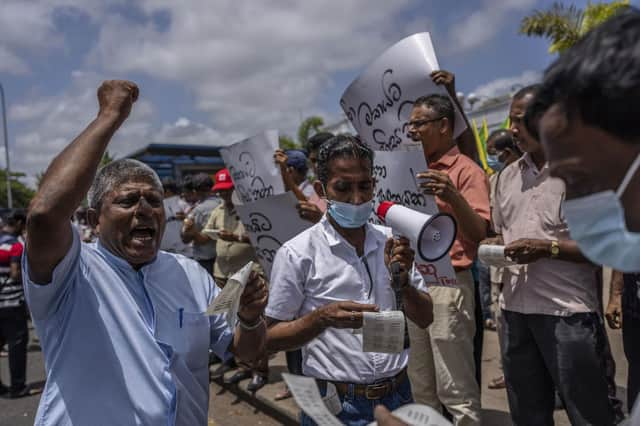Memories of tears, ammunition and a lotus flower in Sri Lanka - Bishop of Leeds Nick Baines


Driving from south to north, the scenery is both diverse and breathtaking. On this small island of only 22 million people, you can swelter by the gorgeous coast, enjoy lush vegetation in the interior, and sit in an almost British climate in the mountains where the tea plantations spread across the fields.
I visited because the (Anglican) Diocese of Leeds has a longstanding relationship with the two dioceses that form the Church of Ceylon – yes, they still use the old name. Not only is it beautiful, but the island’s colonial history is unavoidable wherever you go. History is always complicated. The architecture betrays a story of occupation and exploitation over long periods of time. So, where do we start when trying to understand the chaos that appears to have erupted there in the last few months and years?
Advertisement
Hide AdAdvertisement
Hide AdFor the current conflicts are not new. The bishops have been among the community leaders raising deep concerns over political manipulation, corruption at every level, and anti-democratic systems.
Three symbols haunt my memory and imagination when reflecting on the current events there: tears, ammunition and a flower.
Although it was the name of a late 1970s band, The Teardrop Explodes evokes current events perfectly.
The island is shaped like a teardrop in the Indian Ocean, and the shedding of tears is an appropriate response to its recent history. Plenty of tears have been shed by the people of the island.
Advertisement
Hide AdAdvertisement
Hide AdIn May 2009 a 30-year civil war finally came to a brutal and bloody end. Facts surrounding the final battle at Kilinnochi are not clear as the victorious Singhalese have refused to let outsiders into the area and refused to explain what happened.
Suffice it to say, the Tamil Tigers met their military end there and hopes were strong that peace and ethnic reconciliation might – in time – ensue. But, ethnic violence is not ended by any particular battle being lost. The seeds of future grievances, resentments and violence are sown in the terms of the loss.
When I was there in autumn 2015 the second symbol – ammunition – spoke powerfully into this space. In and around Jaffna lie the ruined remains of hundreds of buildings, overgrown by vegetation – a constant reminder of violence and loss, of death and destruction. And then there is an arresting monument close to where the final battles of the civil war were fought.
Erected by the triumphant Singhalese military, it represents a shell penetrating a very large wall. The warning to the defeated Tamils was clear: we won, you lost – and you are vulnerable.
Advertisement
Hide AdAdvertisement
Hide AdAs a gesture of future reconciliation it wasn’t helpful; indeed, it is solely and intentionally a reminder of past grievance and humiliation.
However, for me, the third symbol – that of a flower – hangs over all of this.
The Bishop of Colombo gave me a pectoral cross which I still have and wear from time to time. The cross reflects Christ’s suffering at Calvary, absorbing all that the world could throw at him, and not throwing it back.
Yet, rather than standing alone, this cross is set into a lotus flower – a symbol of new life. And, so, for our link church in Sri Lanka, the lotus is a powerful symbol of the reality of the real world: violence and death, but rooted in the promise of resurrection – that out of suffering can come new life.
Advertisement
Hide AdAdvertisement
Hide AdThe lotus is the national symbol of Sri Lanka and emerges from Buddhist thinking. But, rather than recycling life and death, the light Christians throw on it has to do with new life, resurrection, defiant hope. In other words, death, violence and destruction do not have the final word in this world and its many conflicts.
There is always more to be said. And, here, resurrection isn’t just a fantasy – some wishful thinking or fanciful vague hope – but the promise of a new life that demands response, commitment and sacrifice if beauty and flourishing are to have half a chance.
In this sense, hope can never be a vague wish or ideal; rather, it motivates those who cry for a different and better future. Hope draws us to the future and rejects trapping us in the insoluble conflicts of the past.
It would be too easy artificially to resolve the tensions inherent in these three symbols: the teardrop exploding again today in frustration with corruption and the abuse of power; the solid image of a shell-penetrated wall; and the cross set in a lotus flower.
Advertisement
Hide AdAdvertisement
Hide AdBut, all three speak of realism in the face of despair. A realism that takes hope seriously and commits itself to making it real. A reminder not just of historic pain, but a call to future life.
- The Rt Rev Nicholas Baines is Bishop of Leeds.